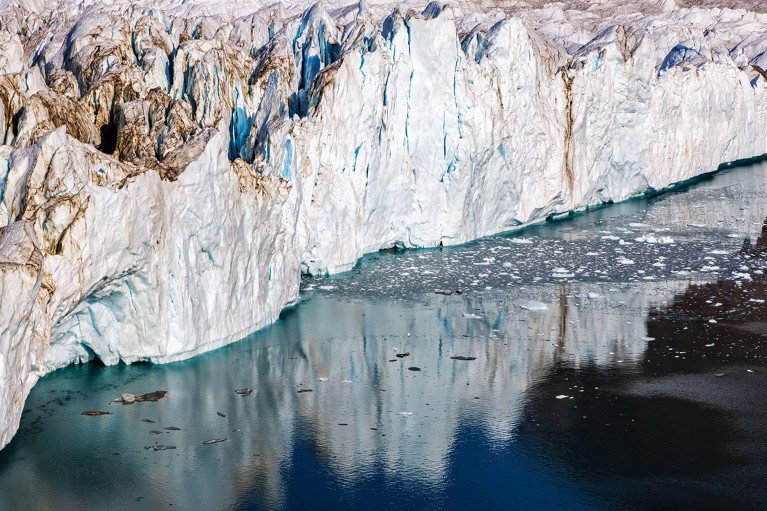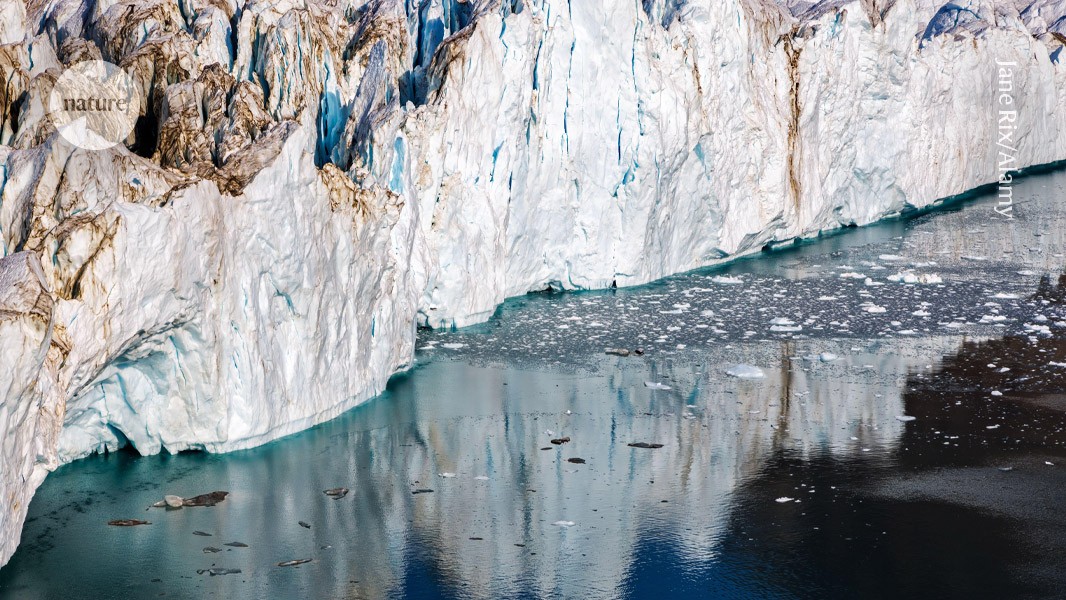
Greenland’s Dickson Fjord, where last year a 1.2-kilometre-high mountain peak collapsed into the fjord triggering a far-reaching seismic signal.Credit: Jane Rix/Alamy
On 16 September 2023, seismologists worldwide registered a weird signal emanating from eastern Greenland. Missing were the variations in frequency that typically accompany events such as earthquakes: the signal was ‘monochromatic’, resembling the ringing of a bell, and lasted nine days. It was quickly registered as a UFO, er, USO: an unidentified seismic object.
“It’s the first time we’ve found a seismic signal of this type in the global record: some people thought their sensors were broken,” says Kristian Svennevig, a geologist at the Geological Survey of Denmark and Greenland in Copenhagen, who led a study1 of the event, published on 12 September in Science. Far-flung stations registered the signal, including one halfway around the globe in Antarctica.
Reports of a tsunami at a research station in Greenland’s Dickson Fjord arrived at around the same time, and scientists pinpointed the likely source: a 1.2-kilometre-high mountain peak had collapsed into a gully in the fjord. They now had a culprit, but it remained unclear how a landslide could produce such a long-lasting reverberation. Svennevig and his colleagues assembled an interdisciplinary team to investigate.
Precedents for such seismological signals existed in the scientific literature going back more than a decade. Landslides in closed water basins had produced a back-and-forth sloshing motion, known as a seiche, yielding a monochromatic seismic signature similar to the 2023 one. The difference was that these events were registered only locally and lasted less than an hour.
Sloshing motion
Svennevig and his colleagues began documenting the landslide and the resulting tsunami. They calculated that the collapse of the mountain top produced a landslide carrying some 25 million cubic metres of material, equivalent to roughly 10,000 Olympic swimming pools. The earthen material smashed into a local glacier at the bottom of a gully, creating a rock–ice avalanche that cascaded sidelong into the fjord.
The initial splash was 200 metres tall, with subsequent waves roughly half that height, Svennevig says. The tsunami was still 4 metres high some 75 kilometres from the initial impact. But what made the event unique was the apparent persistence of the sloshing motion — with waves of roughly 7 metres — that continued between the mountainous sides of the narrow fjord. Using detailed military maps of the floor of the fjord, the team modelled the event, suggesting that the landslide could have produced the mysterious signal.
It’s a nice study that explains an “extremely weird and unusual” seismological event, says Göran Ekström, a geophysicist at the Columbia University’s Lamont-Doherty Earth Observatory in Palisades, New York. He chalks it up to teamwork and the sharing of data. “The speed at which the team was able to document, describe and explain the sequence of events shows how science can work these days.”
In the end, Svennevig and his team suggests that the actual culprit was global warming, which thinned the glacier underpinning the mountain and ultimately set the stage for the landslide. “We will probably see more of these funky events in the future,” he says.


